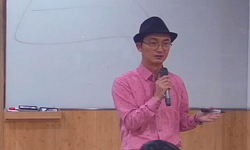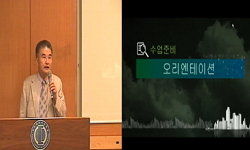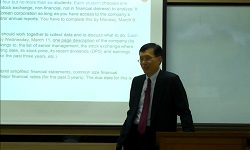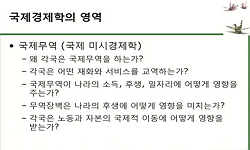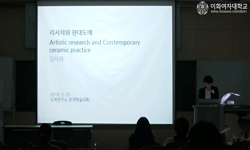The aim of this thesis is to evaluate visual arts policy during Kookmin government period(1998-2002). In the beginning, many artists had expected president Kim Dae Jung to enlarge arts support But the evaluation of them was very negative because the g...
http://chineseinput.net/에서 pinyin(병음)방식으로 중국어를 변환할 수 있습니다.
변환된 중국어를 복사하여 사용하시면 됩니다.
- 中文 을 입력하시려면 zhongwen을 입력하시고 space를누르시면됩니다.
- 北京 을 입력하시려면 beijing을 입력하시고 space를 누르시면 됩니다.
https://www.riss.kr/link?id=A103593624
- 저자
- 발행기관
- 학술지명
- 권호사항
-
발행연도
2003
-
작성언어
Korean
- 주제어
-
등재정보
KCI등재
-
자료형태
학술저널
-
수록면
93-108(16쪽)
- 제공처
- 소장기관
-
0
상세조회 -
0
다운로드
부가정보
다국어 초록 (Multilingual Abstract)
The aim of this thesis is to evaluate visual arts policy during Kookmin government period(1998-2002). In the beginning, many artists had expected president Kim Dae Jung to enlarge arts support But the evaluation of them was very negative because the government was only interested in the development of cultural industry. First, I analysed the government expenditure in the visual arts. Department of Culture and Tourism took the responsibility of visual arts policy. The budget of arts and culture increased to 1 % of total government expenditure in this period. But the main factor was the increasement of cultural industry and tourism expenditure. The budget of visual arts in 2002 was only 6,600million won. Second, I analysed visual arts support programs. (1) The government introduced studio programs for the first time. For 5 years, 2 national studios and 23 public studios were established. (2) The number of art museum was increased to 62. (3) It introduced alternative space support program and supported 200million won annually. (4) Percent for art scheme reduced from 1% to 0.7% of total construction cost, but still 27 public sculpture gardens were built. (5) Business support for visual arts reduced because of IMF. (6) Also arts market froze and many commercial galleries were closed. (7) In order to revitalize region through arts and to promote international exchange of culture, Gwangju Biennale was created. Third, I analysed Arts Plan 2002. It had a radical limitation because it was established in the last year of Kookmin government period. Also it showed special favors to some arts organizations. In general, I think that positive outcomes are the introductions of the studio program and the alternative space support program. Especially alternative space support program enforced the diversity of visual arts, and encouraged creative young artists. But policy of arts market failed because of IMF and visual artists had to go through rough times.
동일학술지(권/호) 다른 논문
-
- 한국미술이론학회
- 강태성
- 2003
- KCI등재
-
한국적 미에 대한 오해 -류종열, 고유섭, 윤희순의 논고 비교분석-
- 한국미술이론학회
- 오병욱
- 2003
- KCI등재
-
- 한국미술이론학회
- 유진상
- 2003
- KCI등재
-
- 한국미술이론학회
- 박정애
- 2003
- KCI등재





 RISS
RISS 코리아스칼라
코리아스칼라
